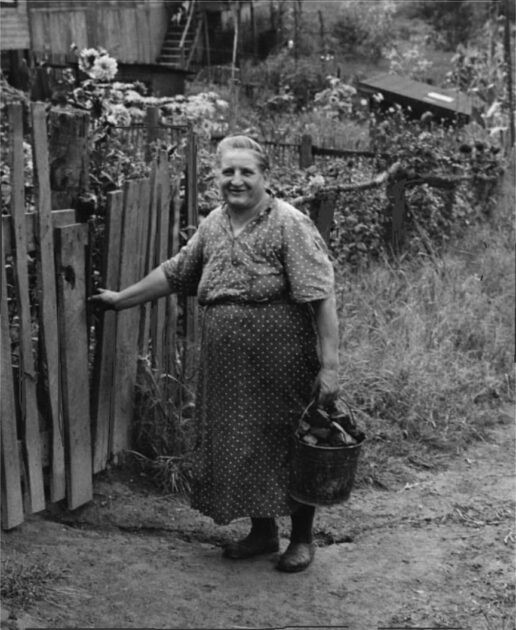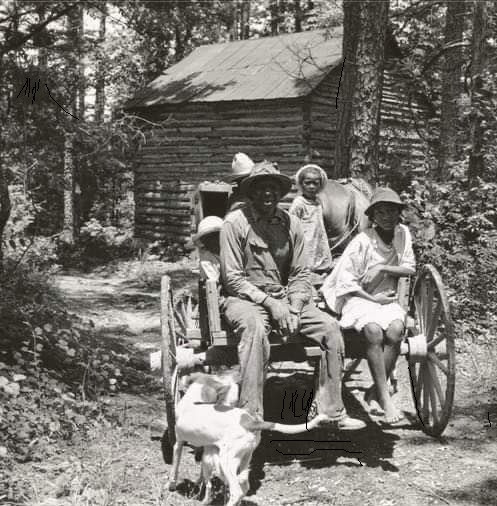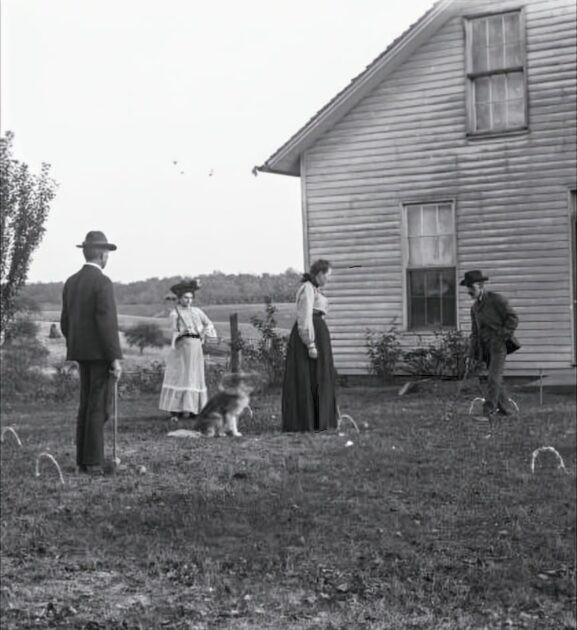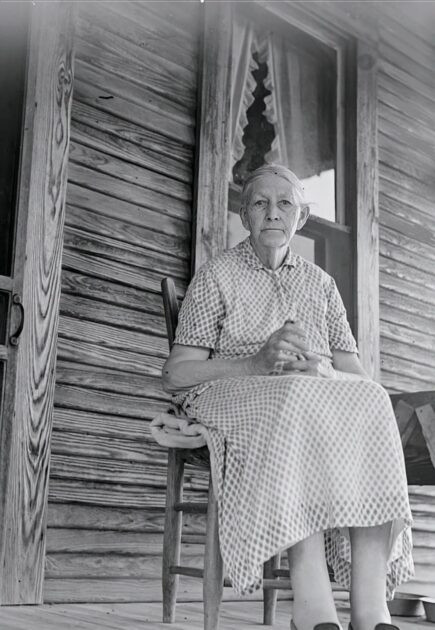A cowboy sits close to his horse on a hill in Old West Bonham, Texas. June, 1910.
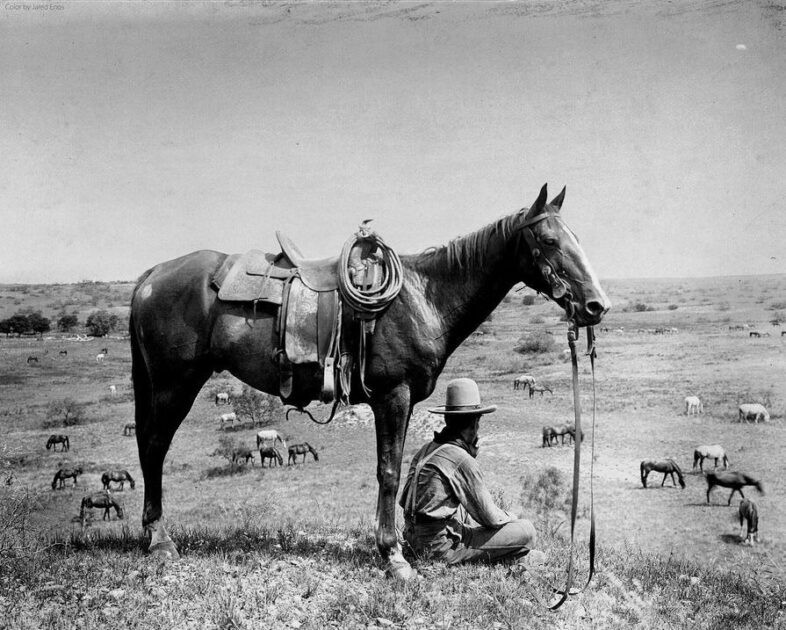
In the fading light of a June evening in 1910, a solitary cowboy sat close to his horse atop a hill overlooking the rustic town of Bonham, Texas. This scene, a timeless vignette of the Old West, encapsulated the spirit and resilience of a bygone era. The cowboy, a nameless figure etched in the annals of history, represented not just a profession, but a way of life that was rapidly evolving.
Bonham, Texas, in 1910 was a town on the cusp of change. Nestled in the heart of Fannin County, it was a place where the traditional ways of the West were beginning to intersect with the encroaching modern world. Railroads were expanding, and the once unchallenged dominance of the horse was being questioned by the advent of the automobile. Yet, in this moment, on this hill, the essence of the Old West was vividly alive.
The cowboy, silhouetted against the setting sun, epitomized the rugged individualism and steadfast loyalty that defined the era. His horse, a sturdy and reliable companion, stood by patiently, embodying the deep bond between man and beast that was essential for survival on the frontier. Together, they had likely traversed vast expanses of prairie, endured the relentless Texan heat, and faced the myriad challenges that came with life on the range.
Dressed in well-worn chaps and a broad-brimmed hat that shielded him from the sun’s harsh rays, the cowboy’s attire was both practical and emblematic. Each item he wore had a purpose, from the bandana around his neck used to ward off dust, to the spurs on his boots that facilitated communication with his horse. His revolver, holstered but ever-present, was a stark reminder of the constant perils that lurked in the untamed wilderness.
As he gazed down at Bonham, perhaps the cowboy reflected on the changes he had witnessed. The town, once a small trading post, had grown with the influx of settlers and the development of agriculture and commerce. Yet, despite its growth, Bonham retained its close-knit community spirit. Neighbors relied on each other, and the cowboy was an integral part of this social fabric. He was a protector, a worker, and often a storyteller, sharing tales of his adventures around campfires.
The horse, too, had its own story. More than just a mode of transport, it was a partner in the cowboy’s journey. Together, they had likely herded cattle across sprawling ranches, navigated treacherous terrain, and participated in the great cattle drives that were crucial to the economy of Texas. The horse’s endurance and loyalty were indispensable, qualities that earned it a revered place in the hearts of those who depended on it.
This quiet moment on the hill was a rare respite for the cowboy. It was a time for reflection, to appreciate the land that provided both challenges and sustenance. The vast, open sky stretched endlessly above, a canvas painted with hues of orange and pink as the sun set. The sounds of the town below were distant, almost muted, as if respecting the solitude of the man and his horse.
In the years to come, the Old West would continue to transform. Bonham would grow and modernize, and the iconic image of the cowboy might fade into nostalgia. Yet, the legacy of these pioneers, their spirit of independence, and their deep connection to the land and their animals, would remain ingrained in the cultural heritage of Texas.
On that June evening in 1910, the cowboy and his horse were more than just figures on a hill; they were symbols of an enduring way of life. Their presence was a poignant reminder of the resilience and fortitude that built the American West. As the sun dipped below the horizon, casting long shadows across the landscape, the cowboy’s silhouette stood as a testament to the enduring legacy of the frontier spirit in Old West Bonham.
